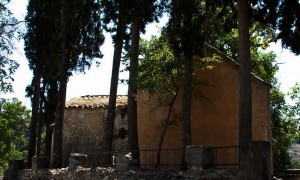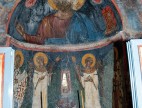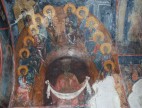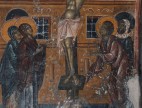Saint George at Apano Symi
St. George is located at the entrance of the deserted settlement of Apano [Upper] Symi, and a little outside the settlement of Kato [Lower] Symi of Viannos. The architectural plan of the church is the result of the addition of a spacious transept to the original, single-nave church, which is not far in date from the erection of the original church, as can be documented from the dedicatory inscription. The inscription clearly distinguishes between George, the sponsor of the interior church decoration, and the donor of the transept, “Constantine Fourlas and his son, Thomas.” The wall painting of the first church compared to other monuments, which were painted by Manuel Phokas, such as St. George in Embaros and St. Constantine at Avdou, should be placed a little before the middle of the 15th century. The wall painting decoration of the transept, which was completed in 1453, the year of the Fall of Constantinople, is the last confirmed work of the painter Manuel Phokas, while it is part of the so-called academic current of the Palaeologan period. The iconographic programme of the church includes, in the original aisle, scenes from the Gospel cycle with emphasis on the miracles of Christ, three of which are depicted on the barrel-vault of the main church, as well as the scene in front of the Magistrate from the life of St. George. Scenes from the Twelve Great Feasts and the cycle of the saint were added later to the transept, whose wall paintings are partially preserved.






